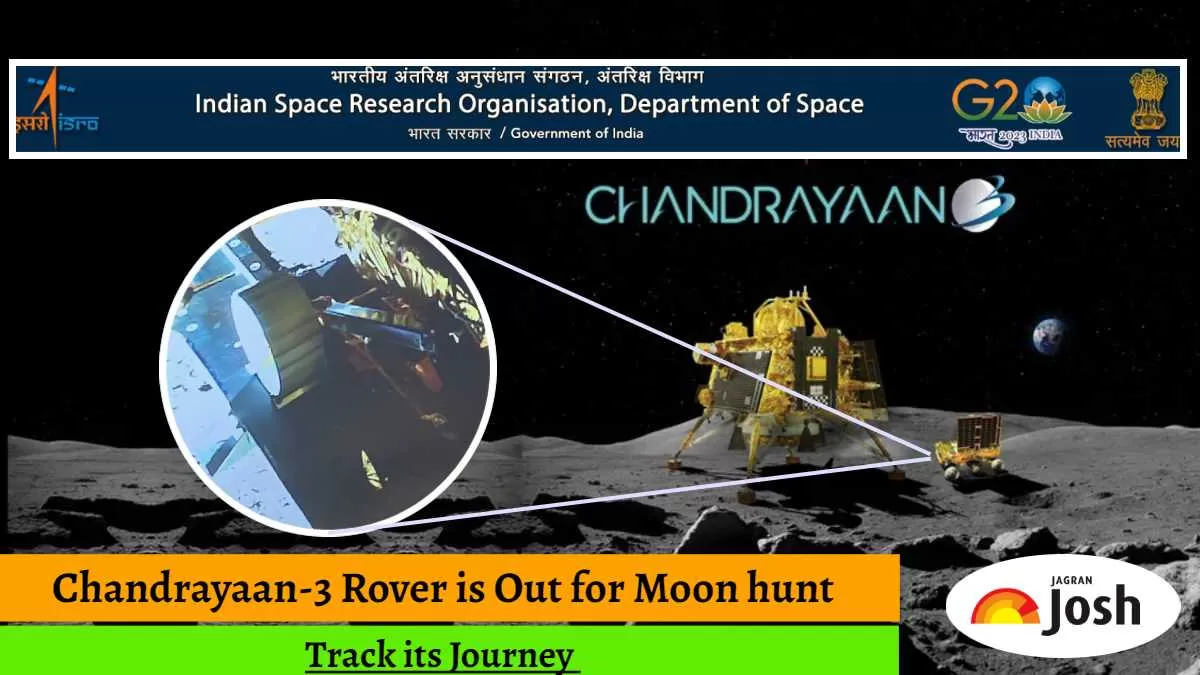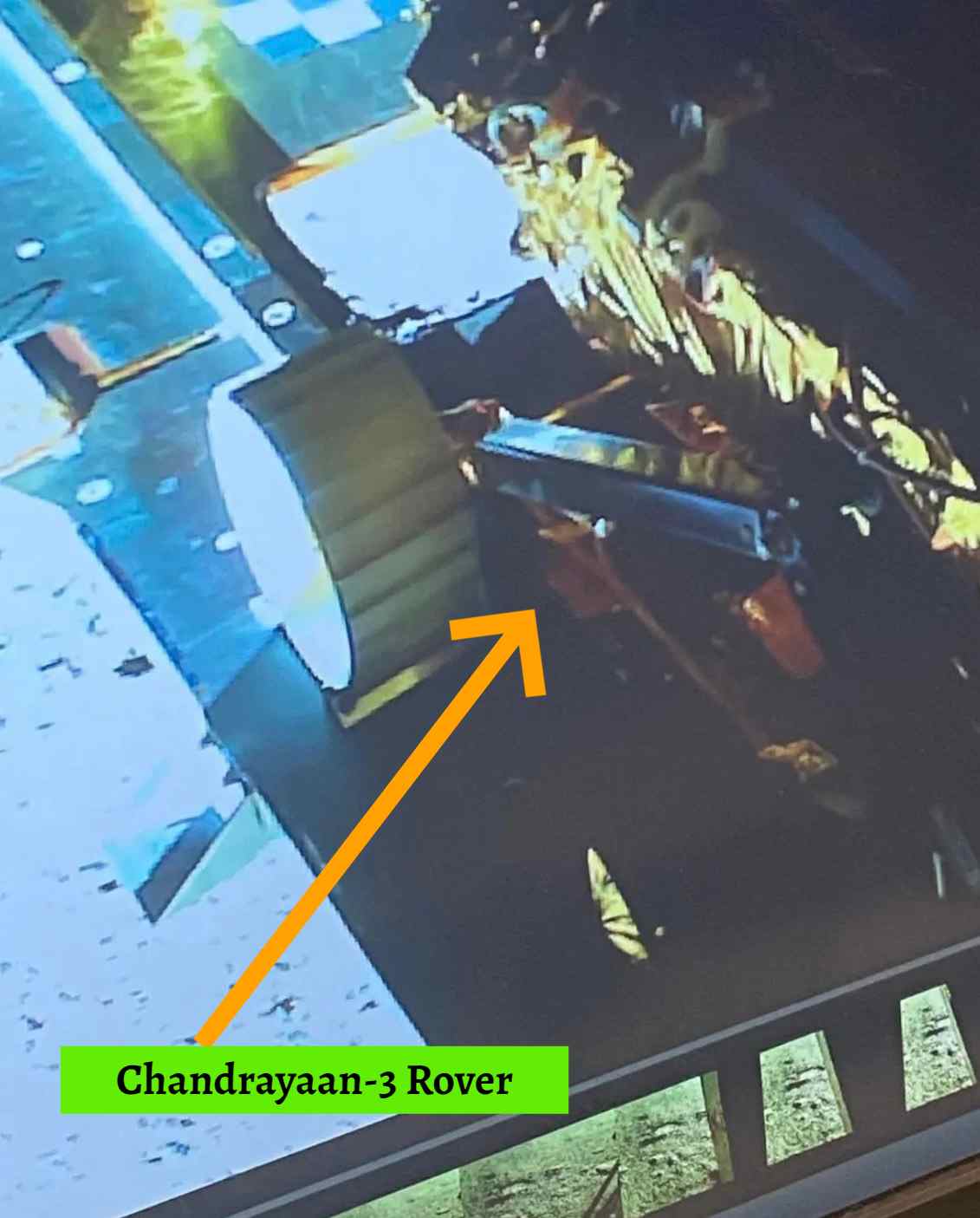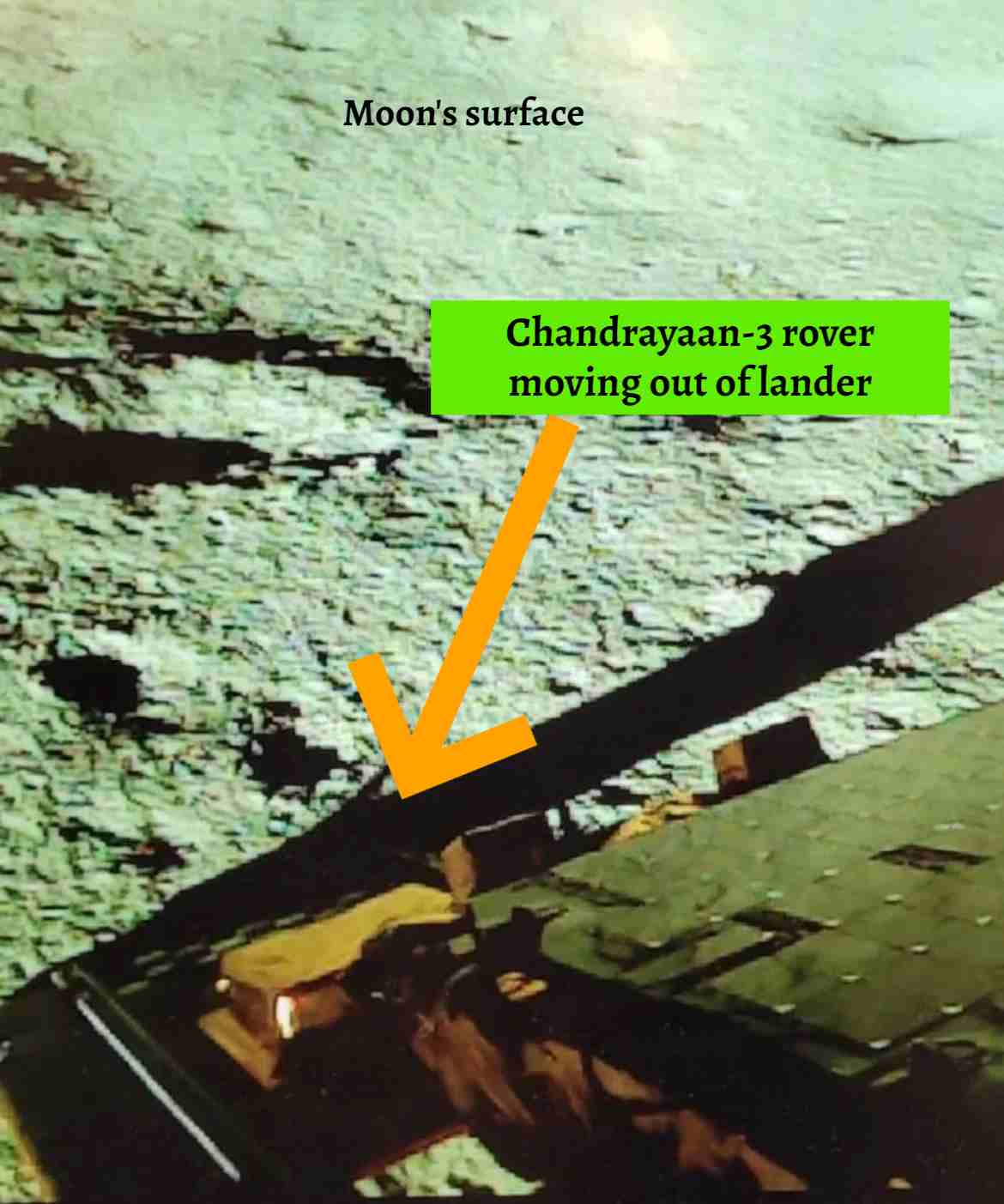Chandrayaan 3 is on moon: It is the time planned by ISRO scientists for the safe landing of the Chandrayaan-3. This is the time for every Indian to feel proud and pray for the successful completion of the Chandrayaan-3 mission. According to the updates from ISRO (Indian Space Research Organisation), Chandrayaan-3 landing is planned for August 23, 2023, at around 18:04 hrs. The successful landing of Chandrayaan-3 aims for the rover to rove on the moon and conduct some in-situ experiments. In this article, we give answers to all the questions related to Chandrayaan-3 and what students should learn from the ISRO Moon mission. You will get to know the journey and objectives of all Chandrayaan missions conducted till now and answers to various questions like, What is Chandrayaan-3's status now? Why is Chandrayaan-3 important? Has India landed on the moon? Will Chandrayaan 3 return to Earth? Why did Chandrayaan-2 fail? How will Chandrayaan 3 benefit India?
Life on Moon?
The Chandrayaan-3 rover on August 29 found the presence of certain elements on the surface of the moon that are essential for life. It also involves oxygen. The other elements are Al (aluminium), Ca (calcium), Fe (iron), Cr (chromium), Ti (titanium), Mn (manganese), and Si (silicon). The search for hydrogen (H) is underway.
Read: Chandrayaan 3 Essay in English for School Students
Journey of Chandrayaan-3
| Timeline Headings | Announcement Date | ISRO’s Announcement |
| First update regarding the Chandrayaan-3 launch | July 06, 2023 | The launch is scheduled for July 14, 2023, at 14:35 Hrs. IST from the Second Launch Pad, SDSC-SHAR, Sriharikota. |
| An announcement for citizens | July 07, 2023 | Vehicle electrical tests completed. Citizens are invited to witness the launch from the Launch View Gallery at SDSC-SHAR, Sriharikota |
| Last update before the launch | July 11, 2023 | The 'Launch Rehearsal' simulating the entire launch preparation and process lasting 24 hours has been concluded. |
| The day of the Chandrayaan-3 launch | July 14, 2023 | LVM3 M4 vehicle successfully launched Chandrayaan-3 into orbit. Chandrayaan-3, in its precise orbit, has begun its journey to the Moon. Health of the Spacecraft is normal. |
| First update after launch. Chandryaan-3 in the first orbit. | July 15, 2023 | The first orbit-raising maneuver (Earthbound firing-1) is successfully performed at ISTRAC/ISRO, Bengaluru. Spacecraft is now in 41762 km x 173 km orbit. |
| Chandrayaan-3 in the second orbit | July 17, 2023 | The second orbit-raising maneuver performed. The spacecraft is now in 41603 km x 226 km orbit. |
| Chandrayaan-3 in the fourth orbit | July 22, 2023 | The fourth orbit-raising maneuver (Earth-bound perigee firing) is completed. The spacecraft is now in a 71351 km x 233 km orbit. |
| Chandraayan-3 set to leave Earth’s orbit | July 25, 2023 | Orbit-raising maneuver performed on July 25, 2023. Next firing (TransLunar Injection), is planned for August 1, 2023. |
| Chandrayaan-3 in translunar orbit | August 01, 2023 | The spacecraft is inserted into the translunar orbit. The orbit achieved is 288 km x 369328 km. Lunar-Orbit Insertion (LOI) is planned for Aug 5, 2023. |
| Chandrayaan-3 in the lunar orbit | August 05, 2023 | Chandrayaan-3 is successfully inserted into the lunar orbit. The orbit achieved is 164 km x 18074 km, as intended. |
| Chandrayaan-3 moving around the Moon | August 06, 2023 | LBN#2 is successfully completed. The spacecarft is in 170 km x 4313 km orbit around the moon |
| Chandrayaan-3 Video: The Moon, as viewed by Chandrayaan-3 during Lunar Orbit Insertion | ||
| Chandrayaan-3 closer to the Moon | August 09, 2023 | Chandrayaan-3's orbit is reduced to 174 km x 1437 km following a manuevre performed on August 9, 2023 |
| Chandrayaan-3 is in 151 km x 179 km orbit | August 14, 2023 | The mission is in the orbit circularisation phase. The spacecraft is in 151 km x 179 km orbit |
| Chandrayaan-3 is in an orbit of 153 km x 163 km | August 16, 2023 | The spacecraft is in an orbit of 153 km x 163 km after the firing on August 16, 2023 |
| Seprataion of Lander Module from Propulsion Module | August 17, 2023 | Lander Module is successfully separated from the Propulsion Module. Deboosting planned for August 18, 2023 |
| Lander Module is in 113 km x 157 km orbit | August 19, 2023 | The Lander Module is in 113 km x 157 km orbit around the moon. Second de-boosting is planned for August 20, 2023 |
| Lander getting closer to the Moon’s surface | August 20, 2023 | The Lander Module is in 25 km x 134 km orbit. Powered descent is expected to commence on August 23, 2023, around 1745 Hrs. IST |
| Few hours before the landing | August 21, 2023 | Chandrayaan-2 orbiter formally welcomed Chandrayaan-3 Lander Module |
| Successfully Landed | August 23, 2023 | Chandrayaan-3 reached its destination. The landing was smooth and safe. |
| | ||
Source: ISRO
.jpg)
Objectives of Chandrayaan-3
Chandrayaan-3 carries the objectives of Chandrayaan-2 with it, which were not fulfilled due to an accident that occurred during the landing of Chandrayaan-2 on the moon’s surface. According to ISRO, the three objectives of Chandrayaan-3 are:
1. To demonstrate a safe and soft landing on lunar surface
2. To demonstrate rover roving on the moon and
3. To conduct in-situ scientific experiments.
Source: ISRO
Why Chandrayaan-2 Failed?
The mission was a success, and the lander was planned to land on the moon’s surface. But a few minutes before the landing, an accident occurred.
- The five engines of the lander module that were designed to cut the craft’s, built up more thrust than required.
- The landing area of the Chandrayaan-2 lander module was 500m x 500m which was not enough flexibility for the craft to overcome possible errors while ensuring safe landing.
In Chandrayaan-3, these things have been taken into account, and the area for landing has now been increased to 4km x 2.5km. This will not limit the craft to a small area.
What is Chandrayaan-3's Status Now?
Congratulations to all of India and the team of Chandryaan-3 scientists! The Chandrayaan-3 lander is now on the moon, and the rover has started collecting data from the moon's surface.
Chandrayaan-3 Mission:
'India🇮🇳,
I reached my destination
and you too!'
: Chandrayaan-3
Chandrayaan-3 has successfully
soft-landed on the moon 🌖!.
Congratulations, India🇮🇳!#Chandrayaan_3#Ch3 — ISRO (@isro) August 23, 2023
Chandrayaan-3 Mission:
Smile, please📸!
Pragyan Rover clicked an image of Vikram Lander this morning.
The 'image of the mission' was taken by the Navigation Camera onboard the Rover (NavCam).
NavCams for the Chandrayaan-3 Mission are developed by the Laboratory for… pic.twitter.com/Oece2bi6zE — ISRO (@isro) August 30, 2023
Chandryaan-3 Rover is Out for Moon Hunt
India reached the moon's south pole, which is an unexplored area for 195 countries. Soon after the landing, the rover came out of the lander and is now exploring the moon's surface. Check out the images of the Chandrayaan-3 rover coming out of the Chandrayaan-3 lander.
Chandrayaan-3 Mission:
Chandrayaan-3 ROVER:
Made in India 🇮🇳
Made for the MOON🌖!
The Ch-3 Rover ramped down from the Lander and
India took a walk on the moon !
More updates soon.#Chandrayaan_3#Ch3 — ISRO (@isro) August 24, 2023
Why Chandrayaan-3 important?
Chandrayaan-3 is the follow-up mission of Chandrayaan-2 and thus carries the same idea. If we talk about the importance of Chandrayaan-3, that can also be defined as the same as that of Chandrayaan-2. During the launch of Chandrayaan-2, ISRO said, "The mission is designed to expand the lunar scientific knowledge through detailed study of topography, seismography, mineral identification and distribution, surface chemical composition, thermo-physical characteristics of top soil and composition of the tenuous lunar atmosphere, leading to a new understanding of the origin and evolution of the Moon." Thus, Chandrayaan-3 will search the moon’s south pole and look for any source or traces of oxygen, water, or fuel that can be utilised for future missions to the moon. If the search went well and scientists found things that they expected, they would probably plan colonisation on the moon in the future.
Source: ISRO
Has India landed on the Moon?
Chandrayaan-2 was the first attempt by India to land on the moon. Due to some unexpected accidents, the lander crashed along with the rover. Thus, India did land on the moon, but partially.
Will Chandrayaan 3 return to Earth?
The lander and rover are designed to surf over the moon’s surface and do not possess the capacity to assemble again and fly back to Earth. Thus, the answer is no; the propulsion module, the rover, and the lander won’t come back to Earth and will be up there forever.
How will Chandrayaan 3 benefit India?
The success of Chandrayaan-3 will highlight the idea of space accessibility. Additionally, Chandrayaan-3's achievement will show India's continuous determination and perseverance in completing challenging missions. It is also encouraging for India's participation in the current race to establish a permanent colony on the Moon.
All Chandrayaan Moon Missions
| Mission Name | Launch Date | Launch Site | Mission Aim |
| Chandrayaan-1 | October 22, 2008 | SDSC SHAR, Sriharikota | Chemical, mineralogical and photo-geologic mapping of the Moon. |
| Chandrayaan-2 | July 22, 2019 | SDSC SHAR, Sriharikota | By carefully examining topography, seismography, mineral identification and distribution, surface chemical composition, thermophysical properties of top soil, and composition of the tenuous lunar atmosphere, the mission is intended to increase our understanding of the moon's origin and evolution. |
| Chandrayaan-3 | July 14, 2023 | SDSC SHAR, Sriharikota | Follows the mission of Chandrayaan-2 |
Student Learning
The Chandrayaan-2 mission, despite its partial failure, offers valuable lessons and insights that can be beneficial for student learning.
1. Learn the importance of perseverance in the face of adversity. Students should know that failures are part of an ambitious endeavour and they should learn how to overcome them with determination and dedication.
2. Critical thinking and problem-solving during times of setbacks Like ISRO scientists and engineers think during the time of the mission’s issues. Your ideas and solutions can save your whole team.
3. Teamwork and collaboration are other things students can learn from the Chandrayaan Moon missions. Scientists and engineers of diverse fields and great knowledge worked together on this mission without any conflict or feeling of superiority. This same behaviour should be followed by the students during a group project.
4. Learning from mistakes and not repeating them, like ISRO scientists have resolved the issues faced by Chandrayaan-2 to ensure the success of Chandrayaan-3, students should also apply this concept. They need to understand that failures are not the end; they are stepping stones to future successes. People learn from their mistakes and tend to grow faster in their lives.
5. Managing expectations and handling pressure to experience less pain. For example, the public and media generated high expectations for Chandrayaan-2, which caused more pain to scientists but still had a positive face. Similarly, students should manage expectations and deal with pressure with a positive attitude.
Read: Chandrayaan 3 School Projects Ideas and Suggestions
Also Read: Know all about the Story behind Chandrayaan-3

.jpg)


